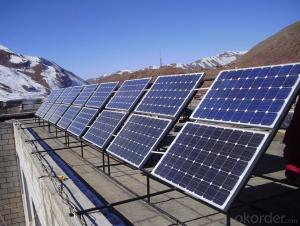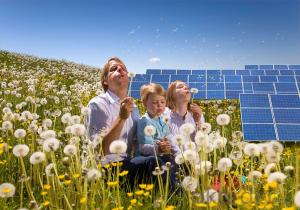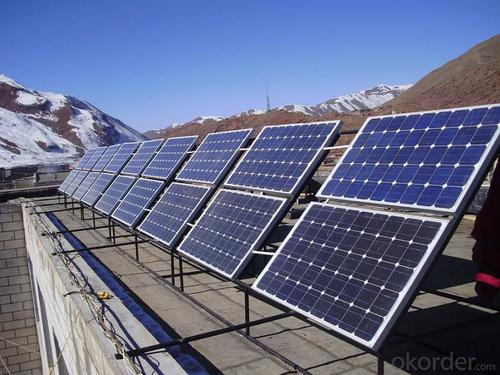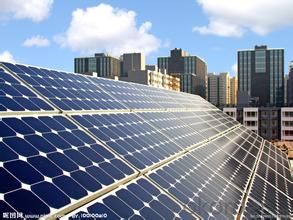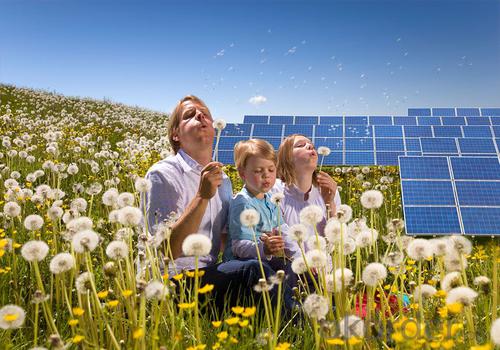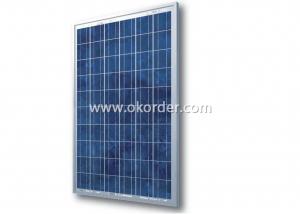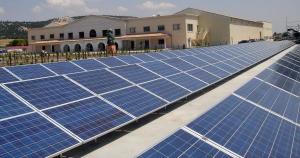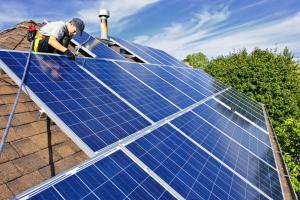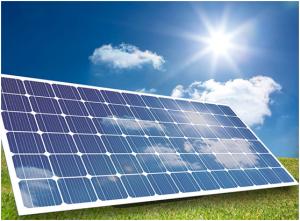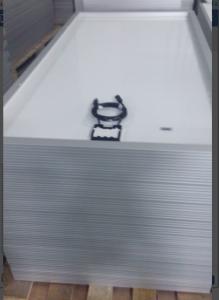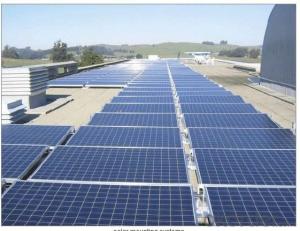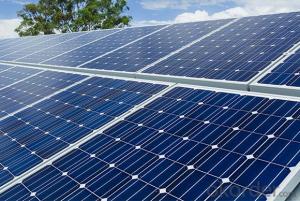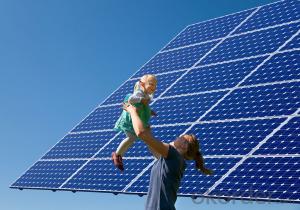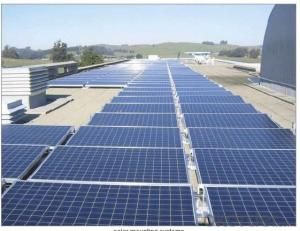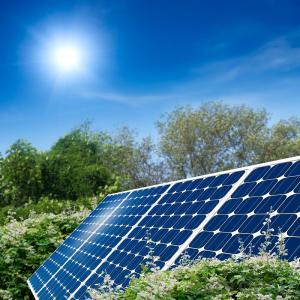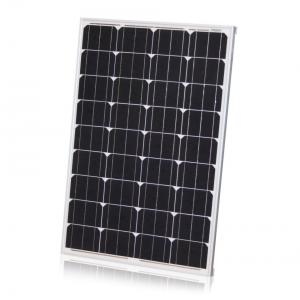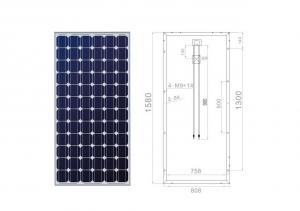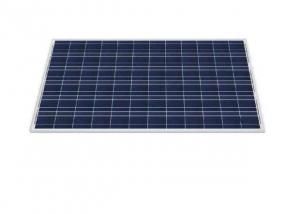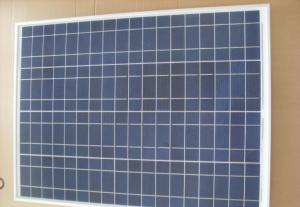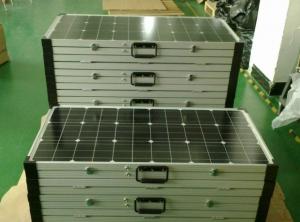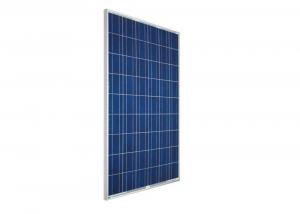Solar Panels San Antonio Texas - CRM260S156M-60 Mono Crystalline Solar Panels
- Loading Port:
- China main port
- Payment Terms:
- TT OR LC
- Min Order Qty:
- 100000 watt
- Supply Capability:
- 1000000 watt/month
OKorder Service Pledge
OKorder Financial Service
You Might Also Like
Specification
About us
CNBM International Corp, established in 2004, is the business entity for trade and logistic of CNBM Group.With the advantages in Cement, Composite Materials, New Building Materials and Engineering, CNBM mainly concentrate on coal, steel and construction equipments and give priority to solar and wind energy development.CNBM International is highly recognized by its business partners and clients all over the world and has established good business relationship with the customers in over 120 countries and regions all over the world.
Introduction
This installation Manual contains essential information for the electrical and mechanical installation that your must know before installing CUSTOMER PV modules. This also contains safety information you need to be familiar with .All the information described in this manual are the intellectual property of CNBM and based on the technologies and experiences that have been acquired and accumulated in the long history of CUSTOMER. This document does not constitute a warranty, expressed or implied.
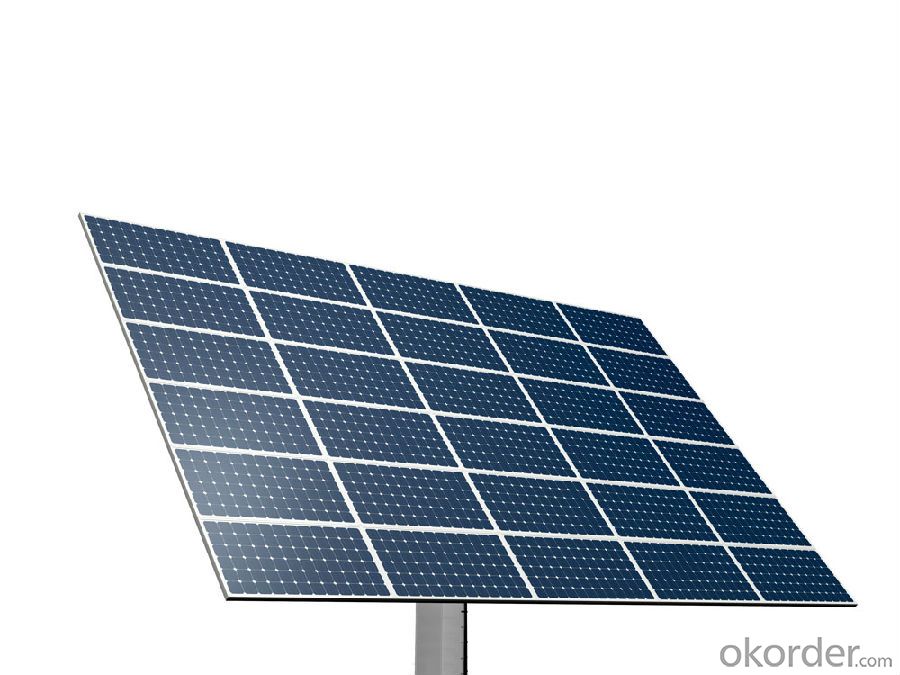
FAQ:
Q1: Why buy Materials & Equipment from OKorder.com?
A: All products offered byOKorder.com are carefully selected from China's most reliable manufacturing enterprises. Through its ISO certifications, OKorder.com adheres to the highest standards and a commitment to supply chain safety and customer satisfaction.
Q2: What is a solar PV module?
A: A solar PV module consists of many solar cells that are connected together (typically in series) and packaged in a frame (typically made of aluminum).
Q3: What are the advantages and disadvantages of monocrystalline solar PV modules?
A: Monocrystalline solar PV modules are the most efficient type of solar PV modules, with the exception of CdTe thin film solar PV modules. As a result, monocrystalline solar PV modules are more expensive when compared to almost all other types of solar PV modules.
Q4: What is the typical service life of a solar PV module?
A: The typical life of a PV module is 25 years. However, superior quality PV modules boast service lives up to 35-40 years (electrical generating capacity is often reduced, however by that point).
- Q: Given that I am going to purchase a solar panel to charge my cell phones and other gadgets, I would like to know what the ammount of power produced by a 6 Watt solar panel is under regular circumstances. (IE partial sun, full sun, cloudy)
- That site tells you somewhat about the cost of solar panels and their MAXIMUM output. Now some who have these panels claim output, in daily terms, 8 times as great as maximum output, which says they are counting on 8 hours of effective sunlight. In California Desert that is sound. You will discover that Ontario Power grid is planning for 3 hours to 4 hours of maximum output . Based on that 3 to 4 hours of maximum output, it would take close to 20 years to recover your cost at the price Ontario pays for solar power. The deal locks you in so that you can not get more money as electricity prices go up, and do not lose if electricity prices go down over that 20 years.
- Q: I'm writing a post-apocalyptic story in it the main character finds a warehouse. Eventually he finds out the roof is covered with commercial solar panels. Given it's been over a year since the majority of the world died no manainence was done, do they still work?
- In my experience working with solar panels, I've found that the panels themselves are robust and can last years. How that energy is transferred from the panel to perform work (sorry for the boffinism) is where the complexity emerges, namely due to the fact solar panels produce DC current, and nearly all of our electrical appliances use AC current. In most cases, solar panels will either send energy through a DC/AC inverter directly to be used for appliances, or stored in deep cycle batteries, then converted to AC using an inverter when the user wants to use his/her appliance. Now to answer your question: the solar panels will be fine, and could conceivably be in fine working order with AC current available IF... and I cannot stress this enough (namely through years of field experience dealing with solar powered scientific instrumentation that was working well and then mysteriously not working)... IF rats and other rodents haven't eaten through the wires. This is probably the most likely reason that a set of solar panels wouldn't be working in your given scenario. Hope this helps, and good luck!!
- Q: i see these things all over the internet on how to make 'home made solar panels' but all of them require you to buy the solar cells and nothing tells you how to make your own. So how can you make your own solar cells?
- Found this video demonstrating the process of making home made solar cells. I do not think this method would be very practical for an off the grid home system.
- Q: a) i'd like to get a solar panel to make this thing i saw in popular science, it was a bag that had a solar panel in the side (you just attach it with grommets into a clear vinyl pocket you make. its for charging elecronics and stuff) and i was wondering what kind i should look at, do they come flexible? can i get them on OKorder? what kind of wattage should i look for (btw it also had a little voltage regulator and stuff to make a little usb in your bag) so any info on that!b) i was thinking about like putting solar panels on my roof, where can i look into that, is that a good choice, has anyone done it, how did it work out? thank you, just curious
- For okorder / for information on how to hooke it up your self. It is a DIY site.
- Q: How much energy can solar panels generate?
- The amount of energy solar panels can generate depends on various factors such as the size and efficiency of the panels, the location and orientation of the installation, and the amount of sunlight available. On average, a typical solar panel can generate about 250 to 400 watts per hour. However, larger solar installations or those with higher efficiency panels can generate several kilowatts or even megawatts of energy, which is enough to power homes, businesses, or even entire cities.
- Q: I want to get solar panels but not spend 20,000!! I found out that you can get a panel to run only your AC unit, I also found something that will run my pool pump! Anyone own either of these? How did you do? Where did you go? How much was it, and was it hard to install?
- Most major cities have construction signs and other public things powered by solar panels. We have parking meter stands, USGS meters, street lights, etc. when these lose efficiency, they need to be replaced. They still work at about 60 percent efficiency. Learn who services these items and ask how to get them at a reduced rate or even for free. Be personable and nice and go to the source physically, not via e-mail. You can get a solar panel to run just about anything
- Q: Im doing a project and i have to persuade some one that solar pannels are great... help ?
- Solar panels are eco friendly, they produce with out disturbing the enviroment. Instead of having to build dams and kill of species that have water homes we can use the sun as our energy source. im all for solar panels i hope this helps :)
- Q: In some countries where electric generation is low, they are not available easily.
- Believe it or not, solar panels are so expensive in this country because of government subsides. Without market competition, companies have no obligation to compete with each other on price. If our government would stop paying people to buy solar panels and giving solar panel companies tax breaks, companies would be forced to lower their price and raise their quality in order to get you to buy their product. This would be true of oil/gas, corn, soy beans and a number of other companies and products as well.
- Q: I would like a list of the solar companies expanding or doing hiring or a good list in general. I know some are expanding. Best answer gets all the points
- damn I wish i could help you but I think the United States is too cool for solar I would move to Italy or Germany or China or India if you want a good solar job those guys know how to see into the future of energy
- Q: Can solar panels be installed on backpacks or camping gear?
- Yes, solar panels can be installed on backpacks or camping gear. There are portable and lightweight solar panels specifically designed for outdoor activities that can be easily attached to backpacks or other camping gear. These panels can help generate renewable energy to charge devices or power small electronic devices while on the go.
Send your message to us
Solar Panels San Antonio Texas - CRM260S156M-60 Mono Crystalline Solar Panels
- Loading Port:
- China main port
- Payment Terms:
- TT OR LC
- Min Order Qty:
- 100000 watt
- Supply Capability:
- 1000000 watt/month
OKorder Service Pledge
OKorder Financial Service
Similar products
Hot products
Hot Searches
Related keywords
